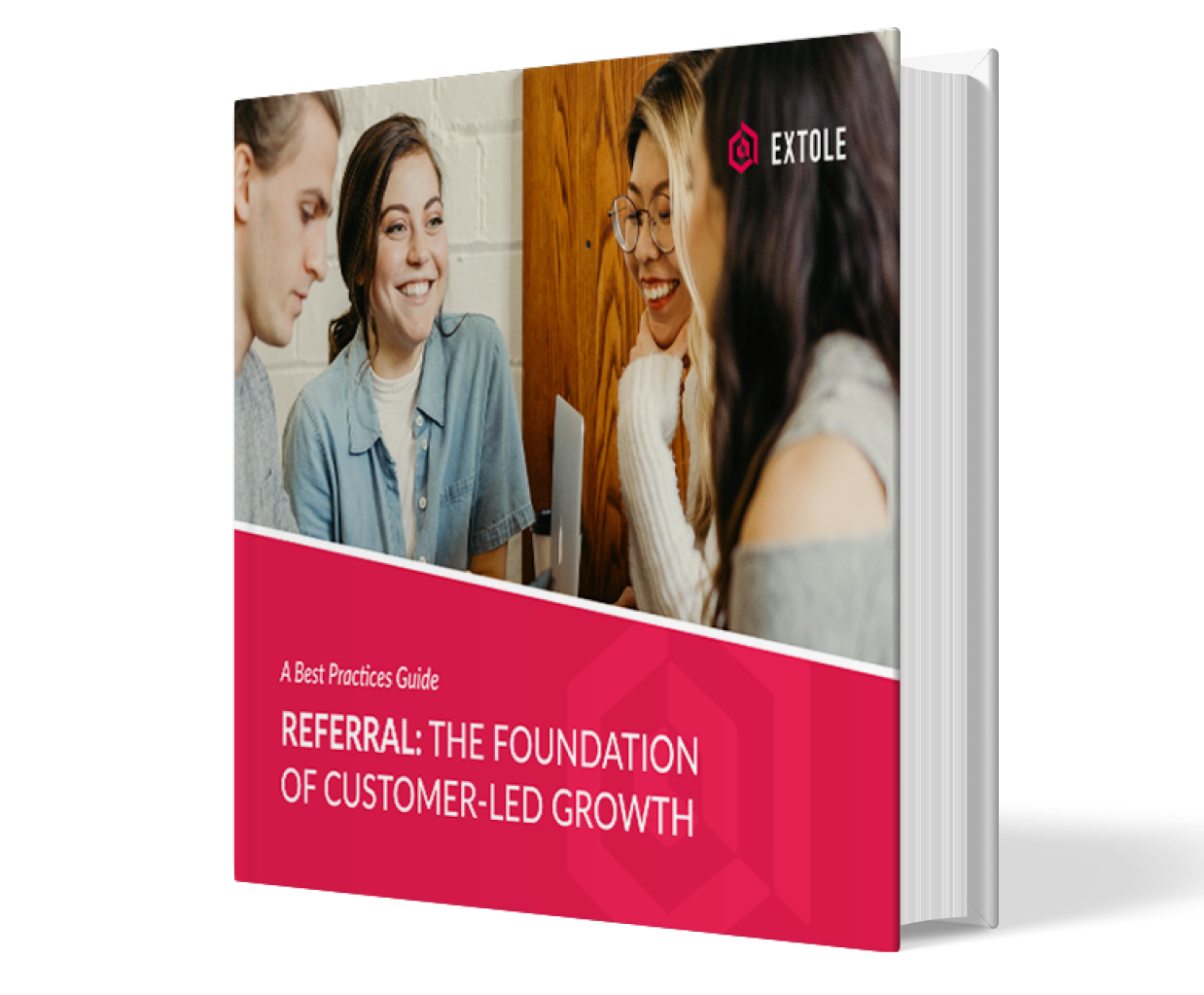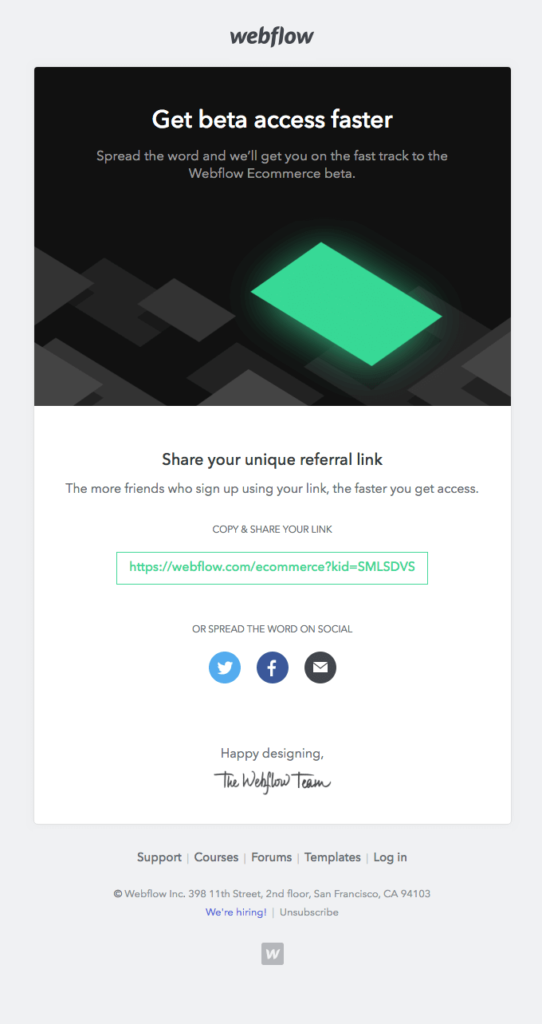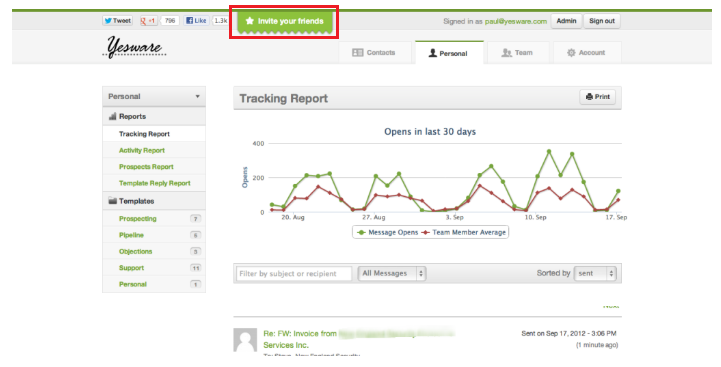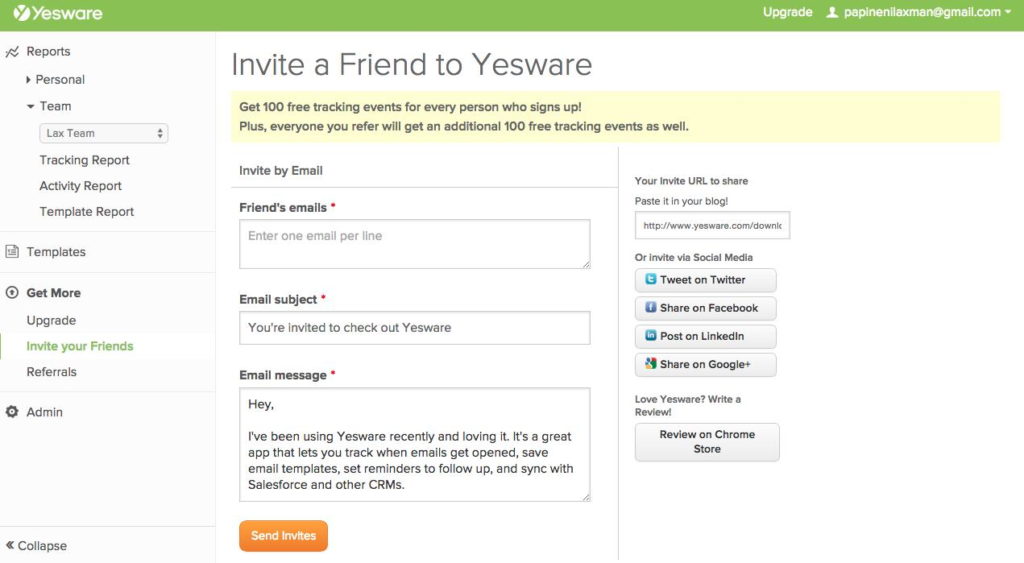Programs only work amazingly when they offer rewards advocates actually care about. With eCommerce products, advocates get savings or credits towards future purchases.
Subscription services for SaaS products are a little different. Advocates aren’t browsing and buying every week. They’re repeat customers but the purchase is automatic without the customer actively doing anything.
This is why referral marketing for subscription services has to be 1) designed based on the kind of service offered and 2) something of value that advocates will accept in exchange for a referral, like a free month for referring a friend.
The user gets something they value, and the business gets users to keep using the product – in the form of free months.
To get you started, we’ll explain the three steps you have to take to tailor your referral marketing campaign to your subscription service. These steps will give you a better idea of how to design rewards that advocates will want to share.
1. Figure out reward details for effective referral marketing
The first step is to offer a reward related to your product and how people use it. Let’s say you have an accounting app that helps users track and manage their expenses and revenue. Your referral program could let users collect bonus points for every referral they make. The more referrals advocates make, the more points they get towards unlocking premium features in the app.
You can even offer an automatic upgrade to a new subscription tier. For example, they move from the basic starter tier to the next level up with access to more features.
The point here is that the reward can be anything you want as long as it relates to your product. Depending on what your app is, consider offering rewards like extra storage, access to bonus features, or a free month of service.
Rewards get current users excited because they already use your product and understand – and appreciate – the value of what you’re offering.
Example #1: Typeform
Typeform lets users create forms for simple data collection. Their referral program gives advocates 10% off of the Pro and Pro+ subscription packages when one of their referred friends upgrades from Basic to Pro or Pro+. Referred customers also get 10% off the Pro or Pro+ packages – for life.
[Source]
2. Make referrals easy to share and track
The easier it is to make a referral, the more likely it is to get shared. With a subscription service where users are billed regularly, they need a little extra incentive to share. Unlike with eCommerce products, app users don’t go back to buy something new from an app often – if at all. They choose a plan, subscribe, get billed regularly, and use the app as needed.
To get your users to share a referral, send them an email shortly after they sign up asking if they want a free product, more space – whatever you identified as something they value.
Include personal referral codes in each email and send advocates regular updates to show them where they are with their points, credits, or whatever reward. As a way to motivate other users, start a “hall of fame” where the advocates who’ve shared the most appear on a leaderboard when users access the app’s dashboard.

Referral Marketing – The Best Practices You Need to Know
Written by veteran referral marketers, this guide will help you optimize your referral marketing program and supercharge growth.
Get the GuideExample #2: Webflow
Webflow is a web design tool and hosting platform. It’s free to use but it offers three plans for users to choose from depending on their needs. To boost their user numbers, Webflow sent an email to advocates with an offer to get early access to their beta eCommerce feature.
In exchange for referring new customers, advocates got access to the beta feature sooner than anyone else. Each email had a personal referral link advocates could share anywhere and links to share quickly on Twitter and Facebook.
3. Remind advocates to share
Once you’ve worked out the basics of your reward and how you’ll introduce it, you need to get advocates to share the program. The majority of advocates are willing to share a referral, so take advantage of this by reminding them about the program.
Oftentimes, referral program details are posted on company websites or in the apps themselves. Advocates see this, but without reminders and encouragement to do something about it, your referral program doesn’t get shared.
Fix this by keeping the reward top of mind. Share the program in more than one place and more than once. Your campaign should include placement in multiple channelsand regular reminders. It takes anywhere from 18 to 254 days to form a new habit. So the more prompts your advocates get, the more likely sharing will become a new habit.
Example #3: Yesware
Yesware is a productivity and organizing tool for sales teams. Their referral program gives advocates 100 free tracking events for each referred customer. Tracking events are valuable because they help users with their data analysis. Users can see when emails are opened or when – and which – links are clicked.
To keep the referral program top of mind, there’s a reminder at the top of the app’s dashboard. The reminder is a bright green banner that says “Invite a Friend to Yesware.”
[Source]
There’s also a reminder in the apps navigation menu.
[Source]
Neither reminder is “loud” or annoying. They’re subtle, but do the trick to make sure advocates see the option to refer.
Put the steps into practice
It doesn’t matter what kind of subscription service you offer; the trick is to tailor your reward to the product. Get to know your users and how they use your product so that you have a better idea of what value you can offer them.
The great thing about referral marketing is it’s flexible. There’s no secret formula to success, so you’ve got an opportunity to make your program your own and speak to users. The sky’s the limit.







